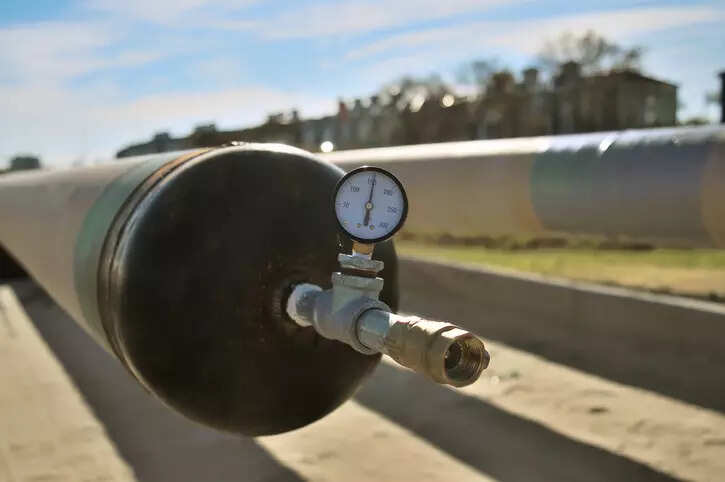[ad_1]

New Delhi: The Ministry of Petroleum and Natural Gas (MoPNG) has set an ambitious target of making gas 15 per cent [1] of India’s primary energy basket by 2030 from the current levels of around 7 per cent. To increase gas availability across the country, Petroleum and Natural Gas Regulatory Board (PNGRB) authorised 228 Geographical Areas (GA’s) for gas distribution covering 53 per cent of India’s area and 70 per cent of India’s population by conducting 11 bidding rounds [2]. Disparate groups of players comprising of established oil marketing companies, global players, industrial houses, and companies with private equity funding have won these geographical areas.
However, the City Gas Distribution (CGD) players are facing several headwinds which were not envisaged at the time of bidding. On the commodity front, stressed domestic gas supplies and steep increase in LNG prices has impacted price competitiveness of natural gas. The adoption of new generation fuels such as EV, Hydrogen is on the rise leading to further impact on conversions. The increase in steel prices, laying cost, delays on Right of Way, delay in connectivity to trunk pipelines have resulted in detrimental impact to the project financials. Further there is very little room to hold back investments, as PNGRB is closely monitoring progress on city gas stations, steel pipe length and number of domestic PNG connections.
Given the aforesaid factors, it is imperative that CGD companies reorient their plans across the three phases of asset planning, building and operate. The radical change in approach could be through comprehensive digital intervention across the phases.
Planning Phase:
CGD companies can benefit by prioritizing infrastructure in areas having high propensity to convert from existing fuels. This can be based on algorithms that overlay multitude of data points such as population density, traffic data, income profile, fuel consumption, distance from steel line, origin
destination analysis etc. The algorithms can help in estimating demand and efficient network phasing.
Build Phase:
CGD companies can benefit by use of digital capex planning tools to lay and monitor dispersed assets across hundreds of kilometres. Such tools help in avoiding situations of capex being idle owing to lack of clearances, unavailability of material, site readiness or completeness of preceding activities.
There are multiple vendors on the ground during CGD laying and digital capex tools help in benchmarking vendors, release of purchase orders, monitoring actionable items for both the specific GA and portfolio of GA’s. There are additional solutions on contract management, procurement, manpower training that can optimize the team size and build transparency during the asset build phase.
Operate phase:
In the operate phase, digital tools can make significant impact spanning across key dimensions of asset management, customer onboarding, customer service and margin management.
CGD companies have traditionally relied on SCADA software for assessment management to monitor their network. However, using cloud native services, CGD companies can adopt or build low-cost IOT based asset monitoring tools rather than going for SCADA solutions. The ecosystem exists within the country wherein the start-ups who have developed solutions to monitor distributed assets can be leveraged to have an alternative to SCADA solutions. Such customized solutions can also resolve one of the impediments to conversion to CNG which are the CNG filling queues that one sees outside retail outlets. An integrated queue management system using vision analytics can help companies provide real-time waiting period estimates and hence ease the anxiety surrounding queues.
Similarly, optimization solutions using real-time sales data, inventory, traffic data and past performance can help optimize utilization of CNG stations, number of mother-daughter filling vehicles and station dry outs. This can result in good savings on infrastructure cost and help in predictive maintenance of the assets.
There are very few companies who have realized the potential of onboarding platform in the gas industry which is extensively used in other industries such as telecom or banking. The CGD companies can immensely benefit by having seamless onboarding experience for customers. This platform can become a channel of engagement wherein the CGD company can offer non-fuel products or services. This can enhance margins and give a chance to roll out digital marketing for more conversions, offer integrated loyalty solutions or offer platform for making bill payments. With the impending launch of Open Network for Digital Commerce (ONDC), CGD companies can easily tap into the e-commerce bandwagon offering their customers varied products and services.
The CGD companies also incur recurring expenses in managing customer complaints which vary from basic issues of connection to complex issues such as leakages that warrant immediate remediation. The use of natural language processing enabled multi-lingual AI chatbot, can help companies to offer all its services using any instant messenger. This chatbot, in addition to automating grievance management, can help in generating leads and providing a knowledge base for customers.
There are optimization avenues even when selecting internal solutions on ERP or CRM. The choices have cost impacts owing to the data structure, integrations, license fee, module selection and maintenance philosophy.
A digital strategy needs to be prepared by careful consideration of GA portfolio, commercial off-the-shelf solutions, vision for diversification, optimization of license fee. Once planned, there is a need to adopt agile delivery model for digital initiatives to help CGD companies plan better, build faster and operate efficiently.
[This piece was written exclusively for ETEnergyworld by Sanjay Sah, Partner, and Shreyas Mhatre, Director, Deloitte India]
References:
1 PIB, February 2022
2 PNGRB press release August 2021
[ad_2]
Source_ link







![Brian Dean Of Exploding Topics On His Career Switch & His Biggest SEO Lessons [DesignRush Spotlight]](https://blog.topseosupertools.com/wp-content/uploads/2022/11/NewsImage_vcsPRAsset_3576344_247245_5da3071c-3fc2-4c48-a8a2-b8849facc98b_0-75x75.png)







